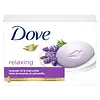What's inside
What's inside
 Key Ingredients
Key Ingredients

No key ingredients
 Benefits
Benefits

No benefits
 Concerns
Concerns

 Ingredients Side-by-side
Ingredients Side-by-side

Water
Skin ConditioningSodium Cocoyl Isethionate
CleansingGlycerin
HumectantSodium C14-16 Olefin Sulfonate
CleansingCocamide Mipa
EmulsifyingCocamidopropyl Betaine
CleansingParfum
MaskingSalicylic Acid
MaskingLactic Acid
BufferingSalix Alba Bark Extract
AstringentCarica Papaya Fruit Extract
Skin ConditioningMusa Sapientum Pulp Extract
Skin ConditioningMangifera Indica Pulp Extract
Skin ConditioningSpondias Mombin Pulp Extract
Skin ConditioningCorallina Officinalis Extract
Skin ConditioningMelia Azadirachta Leaf Extract
Skin ConditioningMelia Azadirachta Flower Extract
Skin ConditioningCoccinia Indica Fruit Extract
Skin ConditioningSolanum Melongena Fruit Extract
Skin ConditioningAloe Barbadensis Flower Extract
EmollientOcimum Sanctum Leaf Extract
Skin ConditioningCurcuma Longa Root Extract
MaskingCoconut Acid
CleansingSodium Isethionate
CleansingSodium Chloride
MaskingSodium Hydroxide
BufferingDehydroacetic Acid
PreservativeEthylene Brassylate
MaskingPotassium Sorbate
PreservativeBenzyl Alcohol
PerfumingPhenoxyethanol
PreservativeWater, Sodium Cocoyl Isethionate, Glycerin, Sodium C14-16 Olefin Sulfonate, Cocamide Mipa, Cocamidopropyl Betaine, Parfum, Salicylic Acid, Lactic Acid, Salix Alba Bark Extract, Carica Papaya Fruit Extract, Musa Sapientum Pulp Extract, Mangifera Indica Pulp Extract, Spondias Mombin Pulp Extract, Corallina Officinalis Extract, Melia Azadirachta Leaf Extract, Melia Azadirachta Flower Extract, Coccinia Indica Fruit Extract, Solanum Melongena Fruit Extract, Aloe Barbadensis Flower Extract, Ocimum Sanctum Leaf Extract, Curcuma Longa Root Extract, Coconut Acid, Sodium Isethionate, Sodium Chloride, Sodium Hydroxide, Dehydroacetic Acid, Ethylene Brassylate, Potassium Sorbate, Benzyl Alcohol, Phenoxyethanol
 Reviews
Reviews

Ingredients Explained
These ingredients are found in both products.
Ingredients higher up in an ingredient list are typically present in a larger amount.
Parfum is a catch-all term for an ingredient or more that is used to give a scent to products.
Also called "fragrance", this ingredient can be a blend of hundreds of chemicals or plant oils. This means every product with "fragrance" or "parfum" in the ingredients list is a different mixture.
For instance, Habanolide is a proprietary trade name for a specific aroma chemical. When used as a fragrance ingredient in cosmetics, most aroma chemicals fall under the broad labeling category of “FRAGRANCE” or “PARFUM” according to EU and US regulations.
The term 'parfum' or 'fragrance' is not regulated in many countries. In many cases, it is up to the brand to define this term.
For instance, many brands choose to label themselves as "fragrance-free" because they are not using synthetic fragrances. However, their products may still contain ingredients such as essential oils that are considered a fragrance by INCI standards.
One example is Calendula flower extract. Calendula is an essential oil that still imparts a scent or 'fragrance'.
Depending on the blend, the ingredients in the mixture can cause allergies and sensitivities on the skin. Some ingredients that are known EU allergens include linalool and citronellol.
Parfum can also be used to mask or cover an unpleasant scent.
The bottom line is: not all fragrances/parfum/ingredients are created equally. If you are worried about fragrances, we recommend taking a closer look at an ingredient. And of course, we always recommend speaking with a professional.
Learn more about ParfumSodium C14-16 Olefin Sulfonate is a cleansing agent made from a mixture of long chain sulfonate salts. It can also help produce foam.
This ingredient may be drying. We recommend speaking with a professional if you have concerns.
Chances are, you eat sodium chloride every day. Sodium Chloride is also known as table salt.
This ingredient has many purposes in skincare: thickener, emulsifier, and exfoliator.
You'll most likely find this ingredient in cleansers where it is used to create a gel-like texture. As an emulsifier, it also prevents ingredients from separating.
There is much debate on whether this ingredient is comedogenic. The short answer - comedogenic ratings don't tell the whole story. Learn more about comegodenic ratings here.
The concensus about this ingredient causing acne seems to be divided. Research is needed to understand if this ingredient does cause acne.
Scrubs may use salt as the primary exfoliating ingredient.
Learn more about Sodium ChlorideWe don't have a description for Sodium Isethionate yet.
Water. It's the most common cosmetic ingredient of all. You'll usually see it at the top of ingredient lists, meaning that it makes up the largest part of the product.
So why is it so popular? Water most often acts as a solvent - this means that it helps dissolve other ingredients into the formulation.
You'll also recognize water as that liquid we all need to stay alive. If you see this, drink a glass of water. Stay hydrated!
Learn more about Water